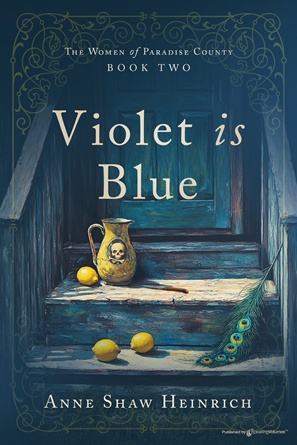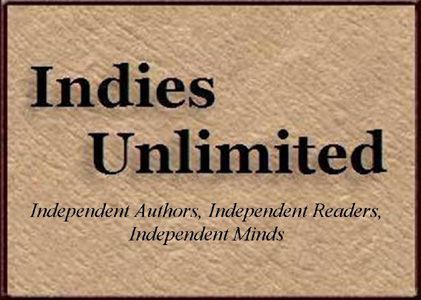Some characters are certainly based on people I have known and observed. Others are fictitious but based on something I’ve experienced. They are all human, so imperfect, and making choices that they think are good in the moment.
Anne Shaw Heinrich – 17 June 2025
The Back Flap
Violet Sellers is blue, and for good reason. She’s repressing a shocking secret she won’t tell anyone, especially her comfortably middle-class parents. When she makes a new friend in school, Jules Marks, who lives on the “other side of the tracks” with his five little sisters, she is introduced to a dark world of self-abuse. As Violet learns about Jules and his shifty mother, Lee, she retreats further into her shell. Her parents, Gloria and Skip, are horrified and do their best to find out what happened to their adolescent daughter while bending over backward to keep the whole town from knowing their business. Jules has an aunt and uncle who know his desperate story, and they finally get a chance to free him and his sisters out of a loveless world of poverty. Meanwhile, a spinster named Margaret Burns watches and waits. She knows all about redemption and getting saved and she’s got a master plan up her sleeve. Margaret and most of the quirky characters in Violet Is Blue eventually learn to dance between the worlds of the “haves” and the “have nots” in ways none of them ever anticipated.
About the book
What is the book about?
Violet is Blue is the second in a three-book series, The Women of Paradise County, published by Speaking Volumes. Taking place in a fictional Midwestern small town of Poulson, the novel begins with a focus on the unlikely bond between two classmates, Violet Sellers and Jules Marks. To an outsider, the two have little in common. Violet and her parents enjoy an upper-middle-class existence that’s a far-cry from what Jules and his five little sisters know. They live in Shakey’s Half on the outskirts of Poulson. It’s a dirty, tired place that has no space for deep, cleansing breaths. Still, Vi and Jules find a solace in one another that leads those around them to reconsider choices they’ve made. As Vi’s friendship with Jules intensifies, she shows him a battle scar that shocks even a tough kid from the other side of the tracks. What Jules does next sets in motion a series of events that change things forever. Meanwhile, Poulson lifer Margaret Burns watches and waits. She knows a saving when she sees one. As the story unfolds, readers learn along with the characters how closely wants dance next to needs.
When did you start writing the book?
I started bits and pieces of this story about fifteen years ago. Initially, as I scratched it out on a yellow legal pad, it had the makings of just a short story. It wasn’t until many years later that I shared it with my editor, who encouraged me to think about it as full novel, and part of the series.
How long did it take you to write it?
Once we determined that the story had legs for a full novel, and as part of the series, I could dive back in with a different purpose. It took me a few months to craft the short story, another five months to complete the initial full manuscript, and four months for editing.
Where did you get the idea from?
I wish that I knew! There are so many people, and places, and circumstances that we experience and observe throughout a lifetime, aren’t there? All of it impresses itself on us in ways we can’t imagine. Sometimes we think or talk about all that we have absorbed in a scattered way, and that’s all we need. I guess some of us need to take it all further to make sense of it. We create new things with what we know: through art or music, or in my case, writing. It’s our way of saying to anyone who will listen, “Did you see what I saw? That really happened, didn’t it?”
Were there any parts of the book where you struggled?
Yes. Some of the characters are based in part on people and moments I remember. As I think about them with adult sensibilities, with an understanding of the world that is less child-like and protected, I hurt in new ways for the characters and for the real people who lived right within my sphere, but under very different circumstances. When our grownup hearts catch up with things we observed as children, it settles differently, and that can be uncomfortable.
What came easily?
For some reason, I’m able to position dark and light moments in a story right next to one another. I guess I’m able to do this easily because it’s just how I see the world. Light and darkness need one another to exist in their fullness, and often, they mingle somewhere in the middle together because in that moment one is not stronger than the other. They must share space.
Are your characters entirely fictitious or have you borrowed from real world people you know?
Some characters are certainly based on people I have known and observed. Others are fictitious but based on something I’ve experienced. They are all human, so imperfect, and making choices that they think are good in the moment. The human condition will forever fascinate me.
Do you have a target reader for this book?
For my first novel, God Bless the Child, I was sure that it would appeal primarily to women, but I’ve been pleasantly surprised to know that men are enjoying it, too. I think anyone drawn to digging into complex relationships and complicated characters will enjoy Violet is Blue. There are funny moments, tragic ones, heroes, a villain or two, and situations that prompt readers to ask hard questions of themselves and others.
How was writing this book different from what you’d experienced writing previous books?
Oh, yes. I went into writing this book with more confidence. With the benefit of some positive reviews under my belt for the first book, I could lean into my instincts about which direction to take on character development.
What new things did you learn about writing, publishing, and/or yourself while writing and preparing this book for publication?
I’ve learned quite a lot. I think the most important thing I’ve come to understand is simply how much the publishing industry has changed. These days, unknown authors are expected to work hard not only with the writing, but also promotion. It takes an enormous amount of energy and tenacity. I’ve also become keenly aware that I’m still cutting my teeth to establish myself. Nothing worth having appears out of nowhere, so I’m being good to myself, perfecting my craft, and staying grateful that I have this opportunity. I feel like I’m just getting started!
End of Interview:
For more from Anne Shaw Heinrich visit her website and follow her on Instagram and Bluesky Social.
Get your copy of Violet is Blue from Amazon US or Amazon UK.


